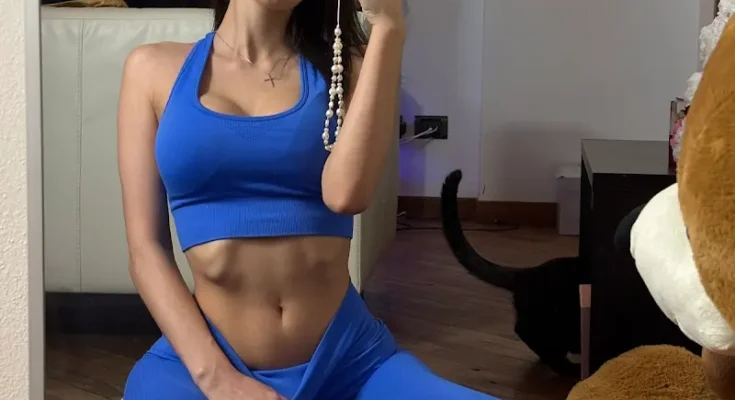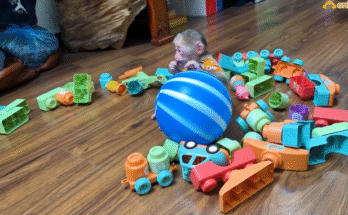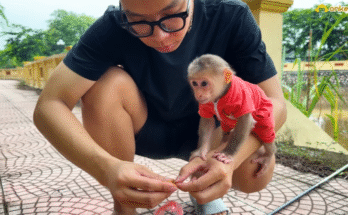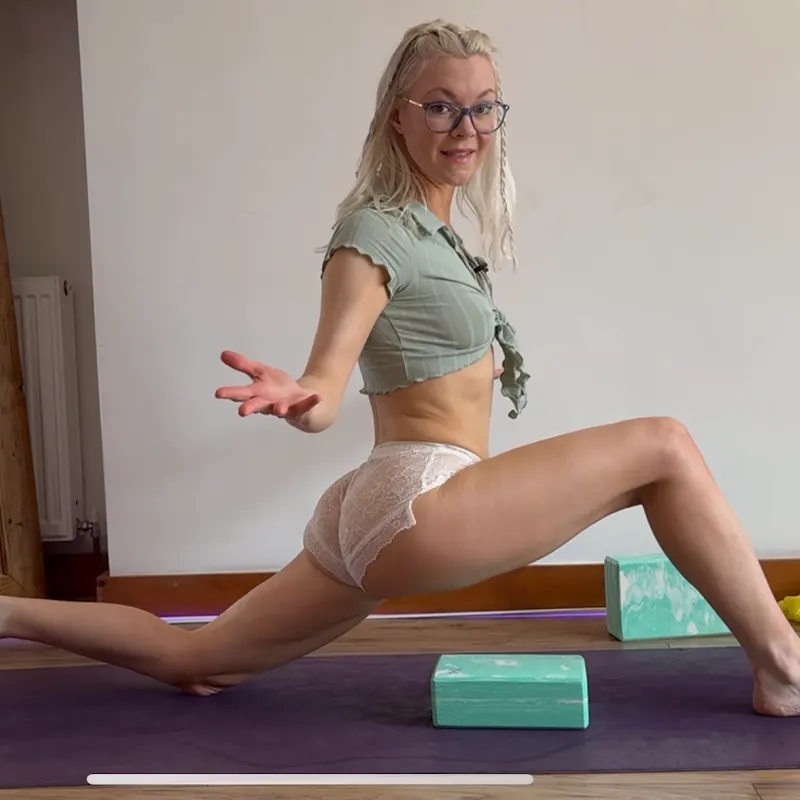
Hamstring flexibility is essential not only for yoga practitioners but for anyone seeking better mobility, posture, and injury prevention. While many traditional routines focus on both legs at once, dedicating your attention to one side at a time can create deeper focus, greater balance, and a more mindful connection to your body. This “One Side Hamstring Stretching Flow” is a perfect at-home yoga sequence that allows you to explore your range of motion on each leg, helping relieve tightness and improve your flexibility gradually and safely.
Why Focus on One Side at a Time?
When you stretch both legs together, like in a standing forward fold or seated forward bend, it’s easy to compensate or favor one side without realizing it. Most people have imbalances in their body — one leg might be tighter, stronger, or more dominant. By working one hamstring at a time, you can notice these differences, breathe into the tightness, and address them more effectively.
Preparing Your Space and Body
You don’t need a yoga studio to begin. Just clear a space in your living room, bedroom, or balcony. Grab a yoga mat or a soft carpet, wear comfortable clothing, and keep a yoga strap or towel handy. Take a few deep breaths and set an intention to listen to your body and move with care.
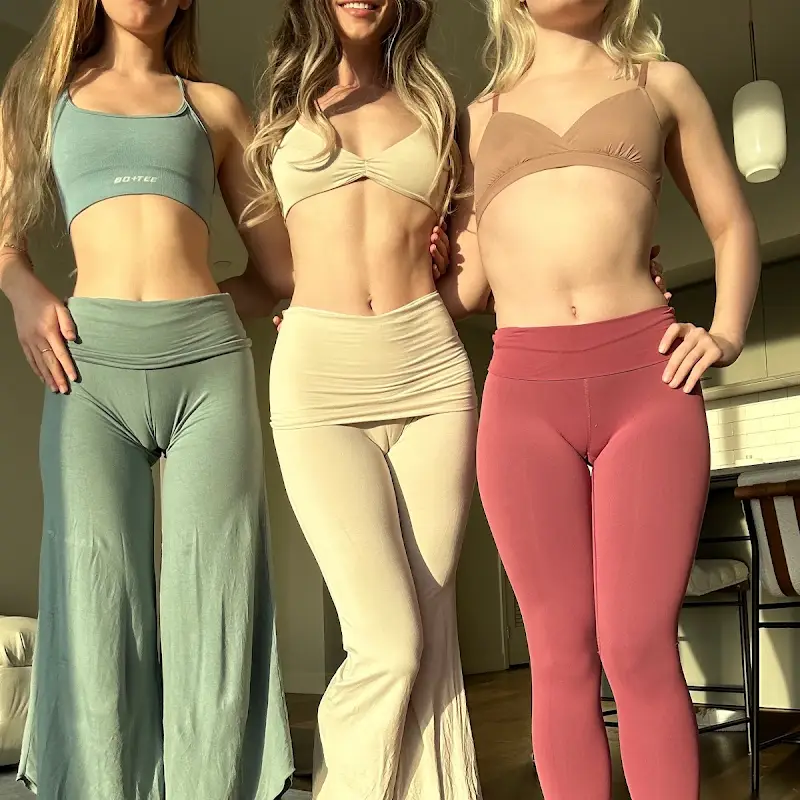
The Flow: One Side Hamstring Stretch (Right Side First)
1. Seated Warm-Up
Sit on your mat with both legs extended in front of you. Roll your shoulders back, lengthen your spine, and place your hands gently beside your hips. Take 5 deep breaths, focusing on engaging your core and grounding your sit bones.
2. Single-Leg Forward Fold (Janu Sirsasana – Right Leg Forward)
- Bend your left leg and place the sole of your foot against your right inner thigh.
- Keep your right leg extended straight with your toes pointing up.
- Inhale to lengthen the spine, exhale to fold over your right leg.
- Keep your hands on your shin, ankle, or use a strap around the foot if needed.
- Stay for 5–10 breaths.
This pose deeply targets the hamstring of the right leg while keeping the spine engaged and safe.
3. Reclined Hamstring Stretch (Supta Padangusthasana – Right Leg)
- Lie down on your back with both legs extended.
- Bend your right knee and loop a strap or towel around the arch of your right foot.
- Extend the right leg upward, keeping your left leg flat on the mat.
- Hold the strap in both hands, and gently pull the leg toward you without forcing it.
- Keep both hips grounded.
- Stay for 10–15 breaths.
This pose provides an excellent hamstring stretch with the support of gravity and floor contact, which helps avoid strain.

4. Half Splits (Ardha Hanumanasana – Right Side)
- Come onto your hands and knees (tabletop position), then step your right foot forward between your hands into a low lunge.
- Shift your hips back, straightening your right leg while keeping the left knee on the ground.
- Flex your right foot, and fold forward over your extended right leg.
- Keep your spine long and your hips square.
- Hold for 5–10 breaths.
Half splits is a powerful stretch that works the hamstring while also encouraging balance and awareness in the hips.
5. Standing Hamstring Stretch (Pyramid Pose – Right Side)
- From standing, step your left foot back about 2–3 feet, keeping both legs straight.
- Square your hips to the front and fold over your right leg.
- Place your hands on the floor, your shin, or yoga blocks for support.
- Keep the right foot grounded and spine elongated.
- Stay for 5–8 breaths.
This pose stretches the hamstring while incorporating balance and alignment. It’s especially useful to observe any tension in the calves and lower back.
Transition to the Left Side
After completing the right side, return to a neutral pose like downward dog or mountain pose to reset your body. Take a few deep breaths, and repeat the entire sequence on the left side. Pay close attention to how the left hamstring responds — is it tighter, looser, or more responsive? These observations help you tailor your practice to your unique needs.

Ending the Flow: Rebalancing
Once both sides have been stretched, it’s important to end the session with symmetrical poses to rebalance the body.
1. Seated Forward Fold (Paschimottanasana)
- Sit with both legs extended in front of you.
- Inhale to lengthen the spine, exhale to fold forward.
- This time, stretch both hamstrings evenly.
- Hold for 8–10 breaths.
2. Supine Twist
- Lie down on your back, hug both knees into your chest.
- Drop both knees to one side for a gentle spinal twist, then switch sides.
- This helps release any tension from the lower back and hips.
3. Savasana (Final Relaxation)
- Lie flat on your back with legs and arms relaxed.
- Close your eyes, take deep breaths, and stay here for 5 minutes.
- Let your body absorb the benefits of the practice.
Benefits of One-Sided Hamstring Yoga Practice
- Improves Flexibility and Balance: By isolating one leg at a time, you can reach deeper stretches safely and gradually improve range of motion.
- Identifies and Corrects Imbalances: Many people unconsciously favor one side; this routine helps you become aware of those tendencies.
- Reduces Lower Back Pain: Tight hamstrings often contribute to back discomfort. Stretching them eases strain on the spine.
- Enhances Athletic Performance: Runners, cyclists, and dancers benefit from limber hamstrings which help prevent injury and improve performance.
- Supports Better Posture: Flexible hamstrings encourage pelvic alignment, supporting a straighter back and upright posture.

Tips for Practicing at Home
- Be Consistent: Practice this flow 3–4 times per week for noticeable improvement.
- Use Props: Don’t hesitate to use straps, blocks, or cushions to support your stretches.
- Listen to Your Body: Never force a stretch. Back off if you feel pain, and use your breath as a guide.
- Modify as Needed: If you’re recovering from injury or have limited mobility, do gentler versions of each pose.
Final Thoughts
The “One Side Hamstring Stretching Flow” is more than just a physical routine — it’s a mindful way to reconnect with your body, address asymmetries, and increase your overall flexibility. Practicing at home offers the freedom to move at your own pace, focus inward, and deepen your awareness of how your body responds to movement.
So unroll your mat, take a deep breath, and let each stretch guide you toward strength, length, and calm. Your hamstrings — and your entire body — will thank you.
